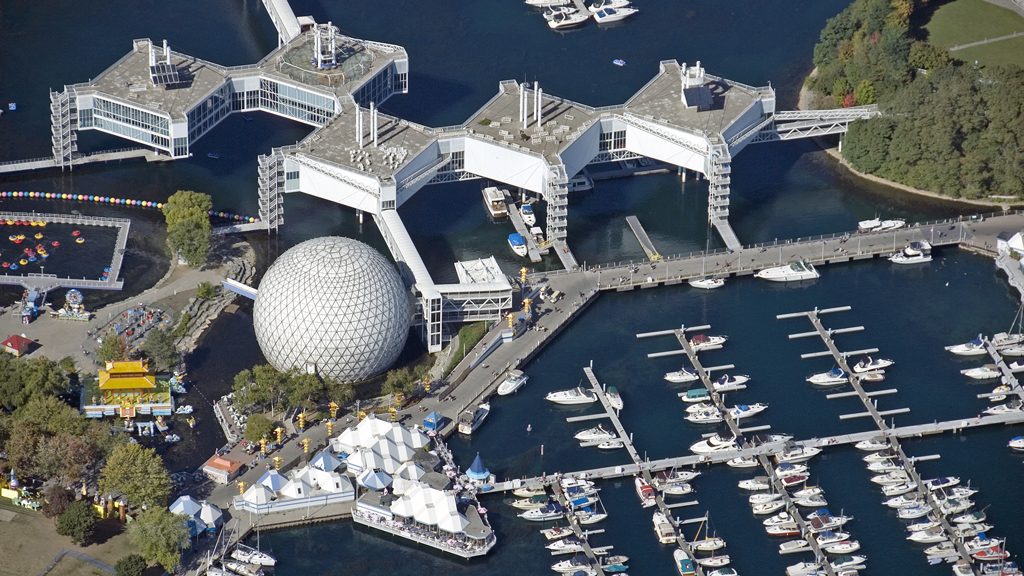News of the recent announcement that the Ministry of Tourism, Culture and Sport as well as Infrastructure Ontario intend to release an Expression of Interest to seek development concepts for Ontario Place has some special interest groups gravely concerned about the lack of public consultation and the future of the site.
“It needs to be revitalized but it certainly does not need to be demolished,” said Ken Greenberg, an urban planner and a board member of Waterfront for All, a not-for-profit organization advocating for the waterfront from Etobicoke to Scarborough.
“The government is saying that every single thing except the Budweiser Stage could be removed and that alarmed people so we held a rally at Metro Hall on Jan. 15.”
The 155-acre Ontario Place site, owned by the provincial government, includes the Cinesphere, which reopened as an IMAX theatre in 2017, pods, the Budweiser Stage, a marina, Trillium Park and William G. Davis Trail, which opened in 2017.
On Jan. 18, Michael Tibollo, minister of tourism, culture and sport, announced the government will encourage potential partners from around the world to submit proposals in the spring.
“Our vision for Ontario Place will make it an impressive attraction that could include exciting sport and entertainment landmarks, public parks or shopping,” said Tibollo in a statement. “We are committed to finding the best private sector partners to renew Ontario Place so that it can once again be an attraction that people can be proud of.”
“We want to preserve the idea of this as a great public space,” said Greenberg. “The second thing is the legacy of the Cinesphere, the pods and the landscape clearly deserve consideration as heritage assets and being repurposed. Some of them already have. Thirdly, the public should be involved in this transformation. This is a public asset, a public resource. Rather than simply putting it on the chopping block for short-term monetization. It’s particularly ironic that it’s the Conservatives who are walking away from their own legacy project.”
Suzanne Kavanagh, a board member of Waterfront for All, said alarm bells went off about the future of the site when the provincial government appointed Jim Ginou to oversee the redevelopment. Media reports indicate after a visit to the site, Ginou referred to it as “disgraceful.” Then the group heard about the Expression of Interest.
“That announcement had us concerned because it just seemed to be sidetracking public consultation,” said Kavanagh. “The reason we’re concerned is because there is only one water’s edge.”
Ontario Place was constructed in 1971 and is said to be a response to Montreal’s Expo 67. It was designed by renowned architect Eberhard Zeidler. Some of the ideas that have been suggested for the site include an amusement park, a giant ferris wheel, a mega mall or a casino.
“The whole idea of Ontario Place is that it was going to be a public space for all Ontarians,” said Kavanagh. “If it’s an amusement park, well now you are defeating the purpose of this space.”
The group wants to make sure there is a comprehensive public review for the redevelopment and they want to be at the table.
“We want to make sure that it is still in the public interest and not a commercial interest that would be driving the new vision,” said Kavanagh. “We don’t want it going to an RFP where there is no input from the community.
“We would like to make sure that there is acknowledgement of the waterfront Indigenous heritage. They’ve got to make sure that Ontario Place is part of the Toronto waterfront parks system. One of the things we would like to see is that there is better integration with the revitalization of Exhibition Place.”
They are also concerned with the fate of the buildings on the site.
“What we need to do is to be thinking about that Cinesphere and say in 50 years from now that will have heritage significance so we need to protect it.
We just can’t keep ripping everything down,” said Kavanagh. “It would be very shortsighted to tear down the Cinesphere and the pods. It changes the skyline of Toronto, which is world renowned.”
Normally a project of this magnitude would follow a public consultation process, Greenberg noted.
“I would have expected they would speak to the publicness of the site but that’s not the case,” explained Greenberg. “It (a public planning process) would identify assets and resources on the site that should be carefully considered and woven into a revitalization scheme. That’s not the case.”
Requests for comment from Tibollo’s office went unreturned as of deadline.




Recent Comments